How to Use ChatGPT: The Complete Guide

ChatGPT is a language model developed by OpenAI, designed to generate human-like text responses. It is part of a new generation of AI chatbots powered by advanced artificial intelligence, specifically the GPT architecture.
As AI-powered chatbots like ChatGPT are becoming increasingly popular and useful in various industries, it is important to understand how to use them effectively.
This guide aims to provide a step-by-step tutorial on using ChatGPT effectively.
Getting Started with ChatGPT
To start using ChatGPT, you need to access the OpenAI website and create an account. Go to chatgpt.com and sign up for a free account using your email address, Google, Apple, or Microsoft account.

After confirming your email and accessing your account, you’ll find yourself on the ChatGPT dashboard.
Here’s where the real fun begins and we can start to request information from ChatGPT.
How to Use ChatGPT
The main way to interact with ChatGPT is by asking it to do things via chat. This is also called a “prompt” and can make the difference between getting what you want out of ChatGPT.
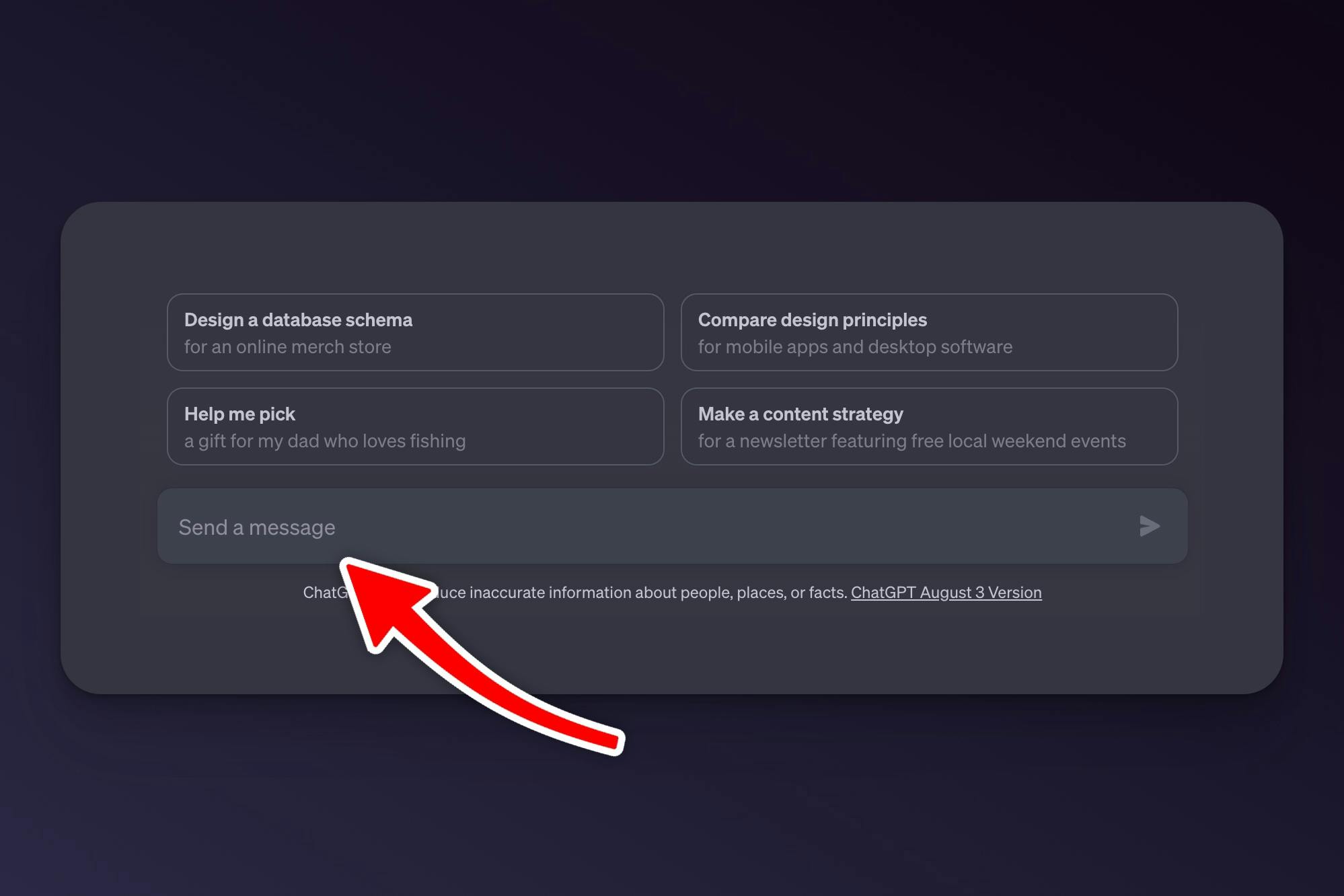
ChatGPT includes some simple suggestions but you can go right ahead and submit our prompt. Here are a few creative examples of things you can ask ChatGPT to do.
- Branding: “Create 5 business names for my catering business”
- Marketing: “Thing of 5 slogans for my catering business”
- Brainstorming: “What are 10 ways I can improve my catering business sales”
- Learn: “Explain how to build a coffee table”
- Interact: “Create a story I can interact with with multiple choices set in the 1800s.”
- Writing: “Write a pain-point-driven introduction for a blog post”
Type your prompt, hit Enter, and ChatGPT will respond. The best thing about ChatGPT is the ability to ask follow up questions. Don’t like what it said? correct it and tell it how it can improve.
This is such a powerful way to fine tune exactly what you want.

To refine your query, follow these tips. After receiving a response, you can:
- Enter a new prompt that will contextually know your previous conversation.
- Regenerate a new response.
- Copy the response.
- Share the chat.
- Like or dislike the response.
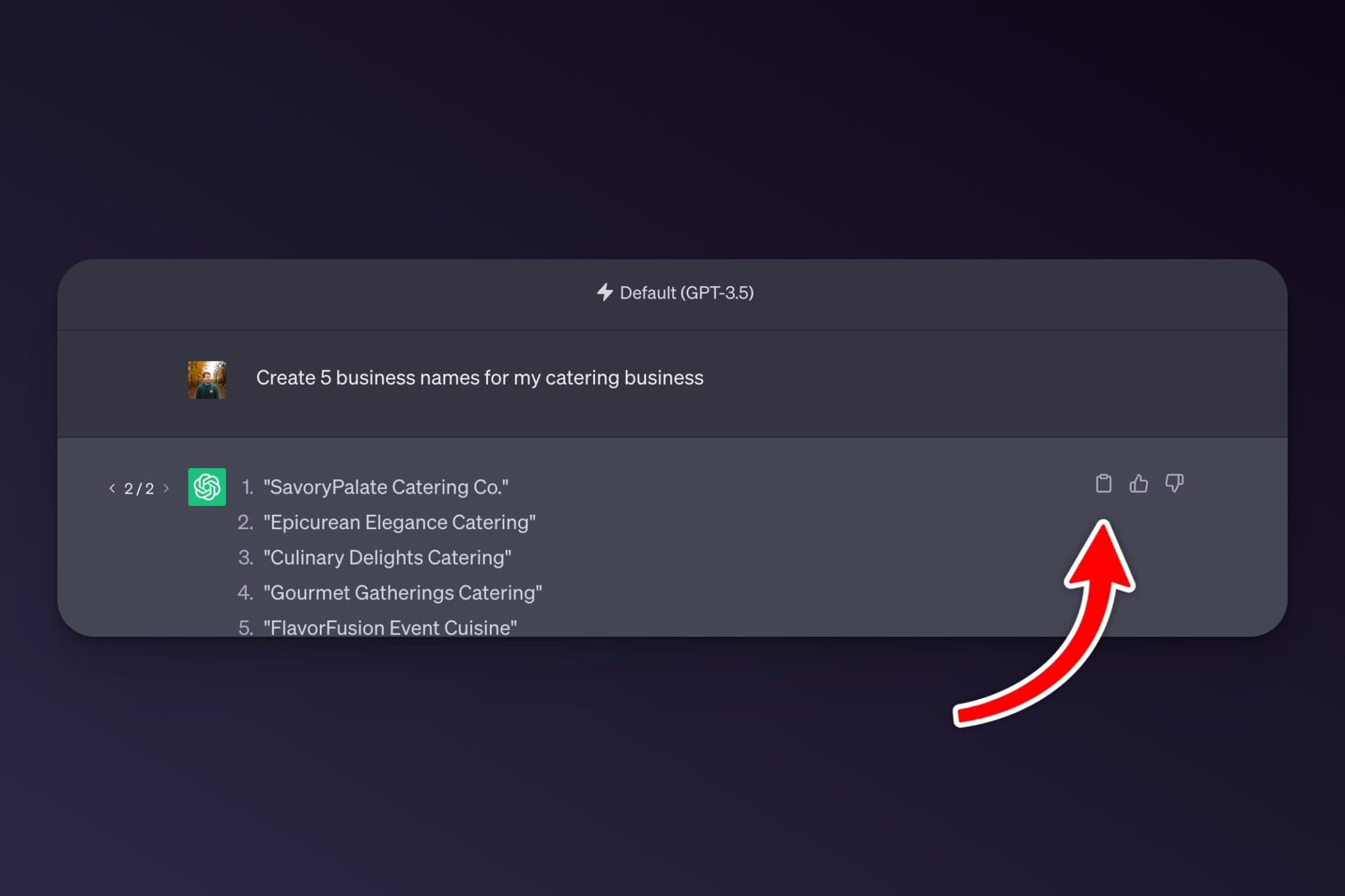
And just like that you are efficiently using ChatGPT! Remember that the prompts are the most important thing to getting the results you want. Thinking outside of the box can also help. You could ask things like “Ask me questions to get a feel for my catering business”, then answer ChatGPT’s questions and ask more follow ups.
Keep in mind OpenAI aims to make AI safe and beneficial. ChatGPT will reject content that is inappropriate, offensive, illegal, or violates privacy.
Now that we have gone over the basics of ChatGPT we can talk about custom instructions.
Custom Instructions
ChatGPT offers the ability to “guide” your chats using custom instructions.
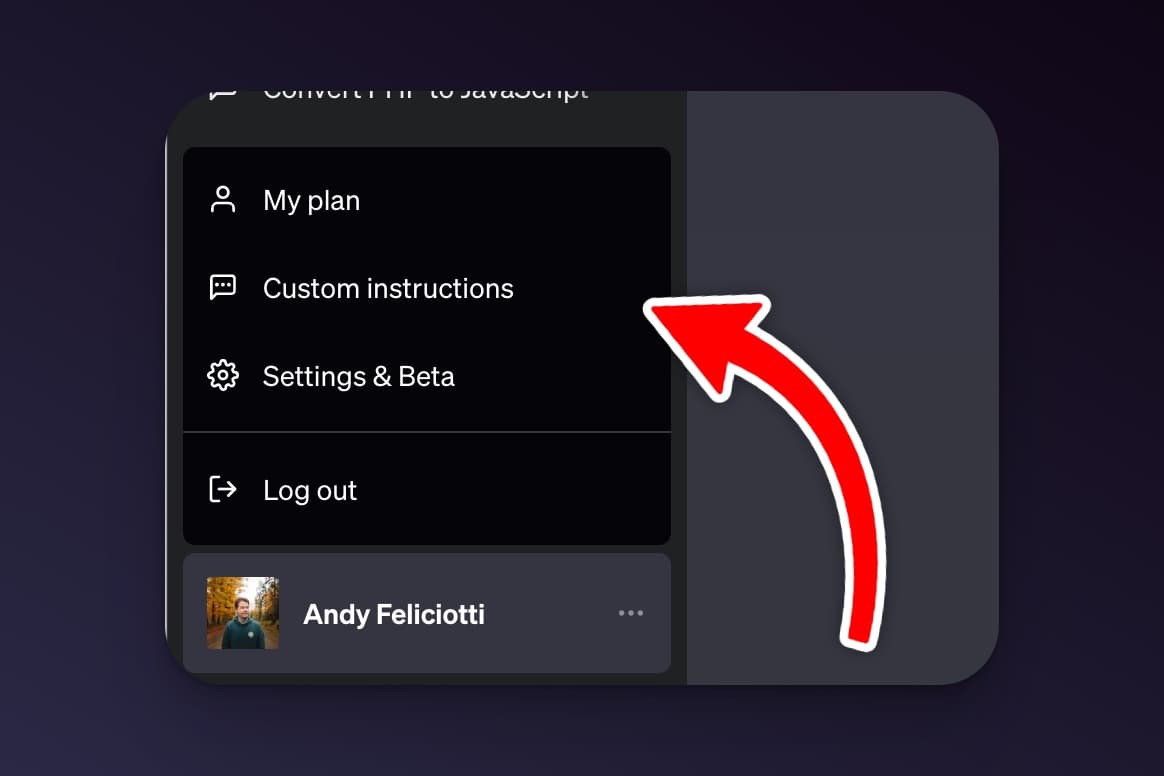
You’ll find the option in the sidebar when clicking your name.
This will bring up a popup of how you what ChatGPT to respond. Writing a movie? give it a description of your story and the context that you’re writing a script.
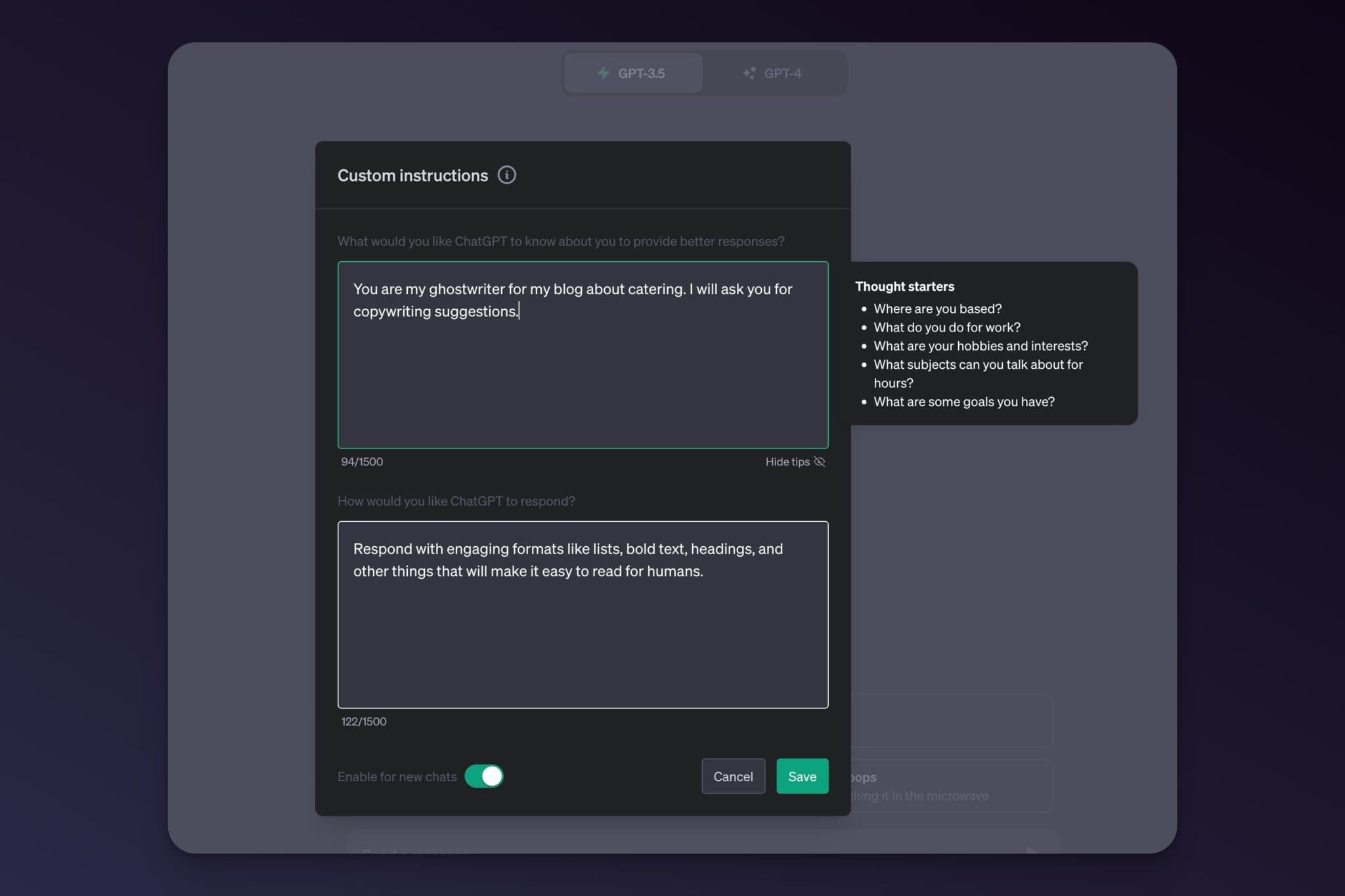
After saving, all your chat requests will use these new instructions.
Managing Your Data in ChatGPT
Your conversations are visible to OpenAI and used for training. This is why many organizations block ChatGPT. I wouldn’t recommend entering anything into chatGPT you wouldn’t want the public to see like corporate secrets, specific legal questions, and proprietary code.
To disable chat history, go to Settings > Chat History & Training. To delete all conversations, click Clear conversations.
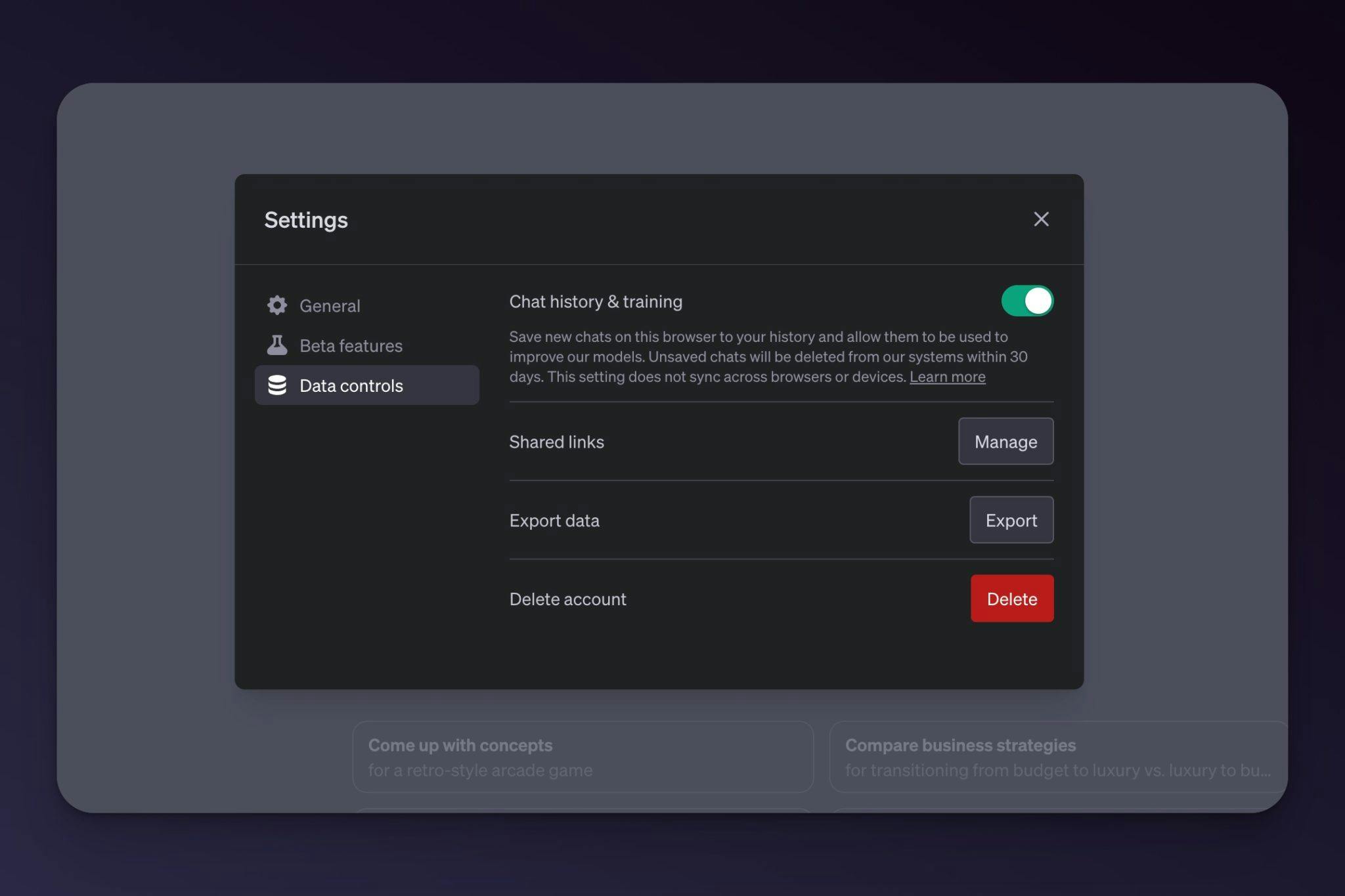
About ChatGPT Plus
If you want even more out of ChatGPT you can sign up for ChatGPT plus. Of course at RightBlogger we think our tools are worth your money but ChatGPT plus does have a couple of benefits.
For $20/month, subscribers get:
- Access to ChatGPT even during peak times.
- Choice of ChatGPT models like the top end GPT-5.
- Faster response times.
- Priority access to new features.
GPT-5 can process more information for more accurate responses but is slower than GPT-4o Mini.
Automating ChatGPT
Want to automate ChatGPT responses? Zapier enables the seamless integration of ChatGPT with various applications, allowing for the automation of workflows.
By leveraging this powerful tool, you can effortlessly automate tasks such as drafting email replies or composing Slack messages. With Zapier’s capabilities, the process becomes streamlined and efficient, enhancing overall productivity.
If you want to look into more of the programming aspects I would recommend reading the OpenAI documentation.
Understanding ChatGPT’s Features
ChatGPT has various features and capabilities, including generating human-like responses, maintaining context during conversations, and the ability to follow system-level instructions.
Let’s go into more depth of ChatGPT’s features.
Human-like Responses
ChatGPT is designed to generate responses that are indistinguishable from those a human might give. It can provide answers to questions, generate creative text, and even engage in conversation on a wide range of topics.
Context Maintenance
ChatGPT can maintain the context of a conversation, which allows it to provide relevant responses and ask appropriate follow-up questions.
System-level Instructions
As we went over in the previous section you can provide system-level instructions to guide the chatbot’s behavior throughout the custom instructions. You can also just ask ChatGPT how you want it to respond. For example, you can instruct the chatbot to speak in a certain style or tone.
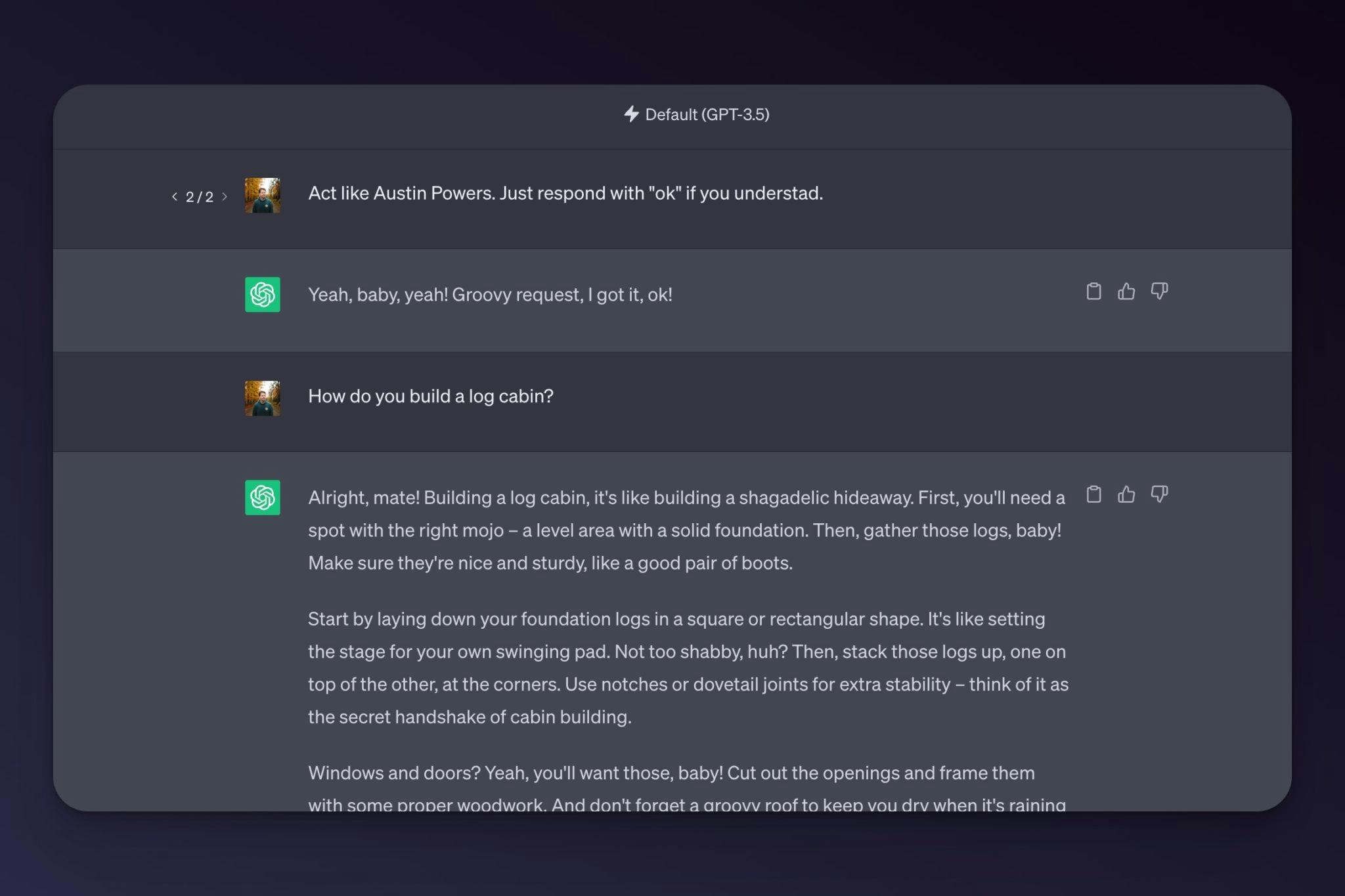
Crafting Effective Prompts
The quality of the response generated by ChatGPT often depends on the quality of the prompt you provide.
Here are some tips for crafting effective prompts:
Be Clear and Specific
Make your instruction as clear and specific as possible. If you are too vague, ChatGPT may not understand what you are asking.
Leverage Previous Bot Responses
You can use the chat history to reference previous responses from ChatGPT. This helps in maintaining the context and continuity of the conversation.
Providing Feedback
Don’t like a response? tell ChatGPT that! You can fine-tune ChatGPT’s behavior for specific use cases by providing feedback and using the chat history to influence the response. You can also give it examples of what you would want.
Ask Open-ended Questions
Open-ended questions encourage more detailed and thoughtful responses from ChatGPT.
Actively Listen and Respond Appropriately
Pay attention to ChatGPT’s responses and respond appropriately. This will help maintain the flow of the conversation.
Advanced Techniques and Use Cases
ChatGPT can be used for a variety of advanced use cases, including brainstorming, creative writing, language learning, and more.
Brainstorming Ideas
ChatGPT can generate a list of ideas based on your preferences and specifications.
Creative Writing
ChatGPT can assist with creative writing tasks, such as composing emails (like thank you emails), essays, music, poetry, and more.
Compose an Email:
Write a Poem:
Create a Short Story:
Language Learning
ChatGPT can help with language learning by providing translations and explanations of language concepts. Even if you are a native speaker you can use ChatGPT to correct grammar and spelling.
Frequently Asked Questions about ChatGPT
Can ChatGPT understand multiple languages?
Yes, ChatGPT has been trained on a diverse range of internet text and can understand and generate text in multiple languages. However, it is optimized for English and may not perform as well in other languages.
Is ChatGPT suitable for business use?
ChatGPT can be used for a variety of business purposes, such as generating content, brainstorming ideas, and providing customer service. However, it is important to note that the responses generated by ChatGPT may not always be perfect and may require some editing or fact-checking.
Additionally, it is important to consider the ethical implications and data privacy concerns associated with using AI chatbots in a business context.
How can I ensure ChatGPT produces accurate and reliable information?
While ChatGPT is designed to generate accurate and relevant responses, it is not infallible and may sometimes produce incorrect or misleading information. Think of it as a really advanced autocomplete, it’s just stringing words together it commonly sees.
It is important to fact-check the information provided by ChatGPT and use common sense. Additionally, providing clear and specific prompts can help generate more accurate responses.
Does ChatGPT have any ethical considerations?
Yes, there are several ethical considerations associated with using ChatGPT. For example, it is important to consider the potential impact of the content generated by ChatGPT and to use it responsibly. Additionally, there are data privacy concerns associated with using AI chatbots, and it is important to ensure that sensitive information is not shared or misused.
Can I integrate ChatGPT into my website or application?
Yes, OpenAI provides an API that allows developers to integrate ChatGPT into their own websites or applications. This allows you to use ChatGPT’s capabilities in your own products and services.
Can ChatGPT generate code or technical instructions?
Yes, ChatGPT can generate code in various programming languages and provide technical instructions. However, it is important to note that the code generated by ChatGPT may not always be perfect or optimized and may require some editing or debugging.
Is there a limit to the number of conversations I can have with ChatGPT?
There is no limit to the number of conversations you can have with ChatGPT. However, there are rate limits on the OpenAI API, which may limit the number of requests you can make in a certain period of time.
Conclusion
ChatGPT is a powerful and versatile tool that can assist you in various aspects of your personal and professional life.
By following this guide, you can learn how to use ChatGPT effectively and unlock its full potential. Start using ChatGPT today and experiment with its features to discover the many ways it can benefit you. Of course if you are a RightBlogger subscriber we also offer a chat tool that all of this same advice will apply to.
Remember to provide feedback on problematic model outputs and share your experiences with the ChatGPT community. This will help improve ChatGPT and make it more effective for everyone.
Don’t want to deal with writing prompts or thinking of questions for ChatGPT? RightBlogger offers a suite of AI tools that takes the guess work out of AI content creator.
How do I write a good ChatGPT prompt so I get a useful answer?
A good prompt tells ChatGPT exactly what you want, who it is for, and what “good” looks like. The more specific you are, the better the output.
Start by adding context and a clear goal. For example: “I run a catering business. Write 5 Instagram captions to promote a new fall menu. Keep them under 150 characters.”
Add constraints like tone, format, and length. You can also paste an example and say, “Make it sound like this.”
If you are stuck, use the RightBlogger Prompt Improver tool to refine your prompt. It helps you turn a vague idea into a clear instruction you can reuse.
What should I do if ChatGPT gives a wrong or low-quality response?
Tell ChatGPT what is wrong and ask for a better version. Clear feedback often fixes the problem faster than starting over.
Be specific about what to change. Say things like, “Make it shorter,” “Use simpler words,” “Add 3 examples,” or “Do not repeat ideas.”
You can also ask follow-up questions that build on the same chat. This keeps the context, so you do not have to restate everything.
If you are writing blog content, consider running your final draft through an SEO check so you catch gaps and improve structure. A guide like RightBlogger SEO Reports can help you spot what to improve before you publish.
Can I use ChatGPT for business or blogging content without getting in trouble?
Yes, you can use ChatGPT for business tasks like brainstorming, outlining, and drafting content. You should still review, edit, and fact-check before you publish.
Avoid copying sensitive or private info into the chat. Do not paste client data, passwords, or company secrets, because your chats may be stored and used for training depending on your settings.
If you use AI to write, make the result your own by adding your real experience, examples, and a clear point of view. This usually improves trust and helps your content perform better.
For a smoother blogging workflow, tools like the RightBlogger AI Article Writer can help you go from idea to draft faster while still giving you control over the final output.
What are Custom Instructions in ChatGPT, and should I use them?
Custom Instructions let you tell ChatGPT how you want it to respond in every chat. This saves time because you do not have to repeat the same guidance again and again.
You can set details like your role, your audience, your tone, and your preferred format. For example: “Write at an 8th grade reading level. Use short paragraphs. Add bullet points when helpful.”
This is especially useful for creators who want consistent writing across many posts. It can also reduce editing because ChatGPT starts closer to your style.
If you want even more control over voice, you can also look at RightBlogger MyTone to match your writing style. It is helpful when you want content to sound like you, not like a bot.
How can RightBlogger help me use ChatGPT faster for writing and SEO?
RightBlogger helps you turn ChatGPT style work into a repeatable workflow for blogging. Instead of starting from a blank page, you can use tools built for research, drafting, and optimization.
If your goal is to publish more often, you can write faster and stay consistent with one system. This is useful when you are juggling ideas, outlines, drafts, and edits.
RightBlogger can also help with SEO tasks that people often forget, like checking what to improve before hitting publish. That can save time and help your posts rank.
To see how it fits into a content workflow, explore the RightBlogger AI Chat Tool for guided conversations or learn about scheduling and hands-off publishing with RightBlogger Autoblogging.
Article by Andy Feliciotti
RightBlogger Co-Founder, Andy Feliciotti builds websites and shares travel photos on YouTube.
New:Autoblogging + Scheduling
Automated SEO Blog Posts That Work
Try RightBlogger for free, we know you'll love it.
- No Card Required
- Blog Posts in One Click
- Unlimited Usage





Leave a comment
You must be logged in to comment.
Loading comments...